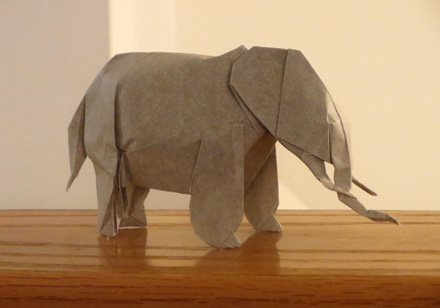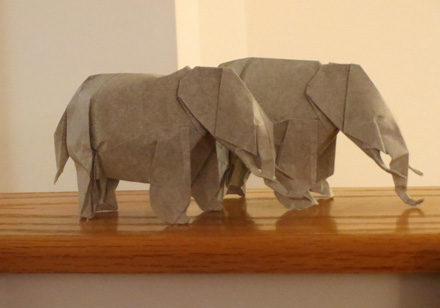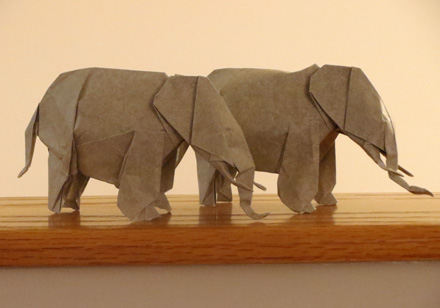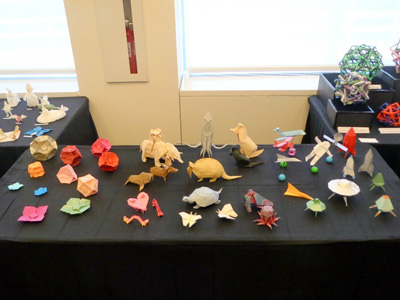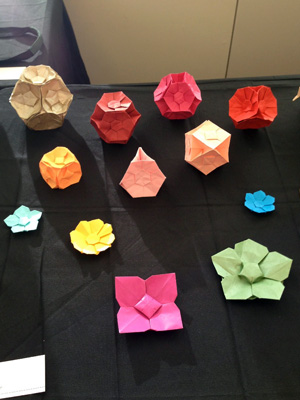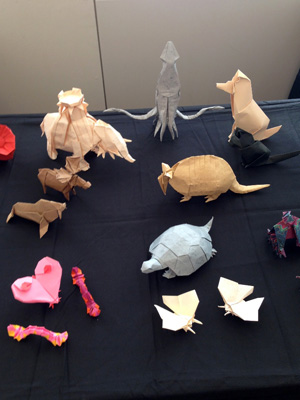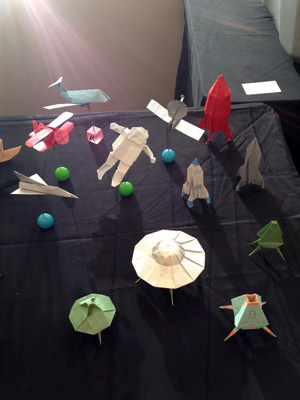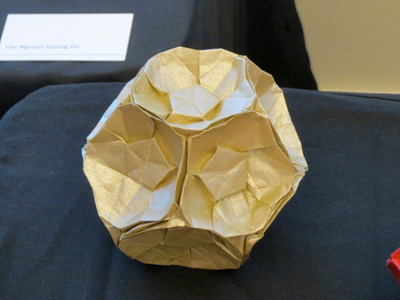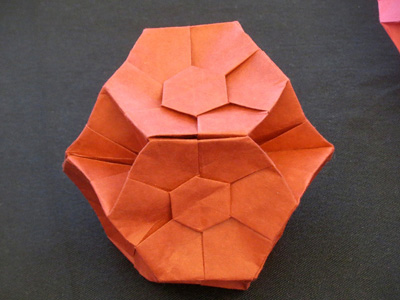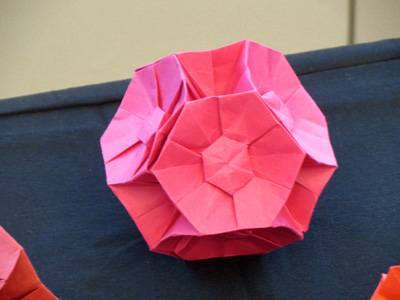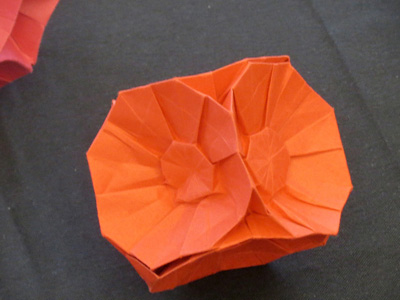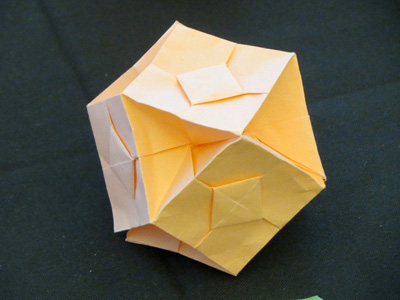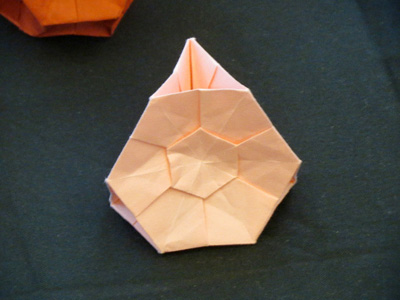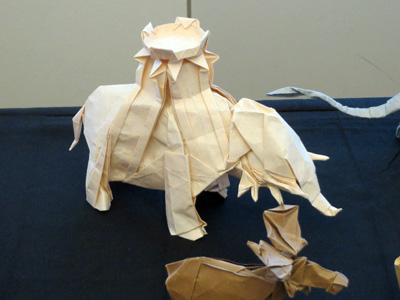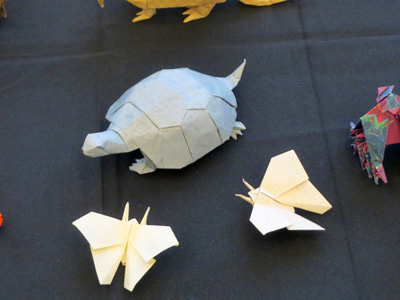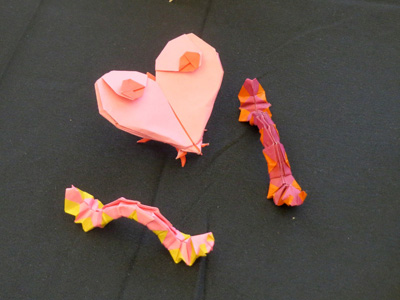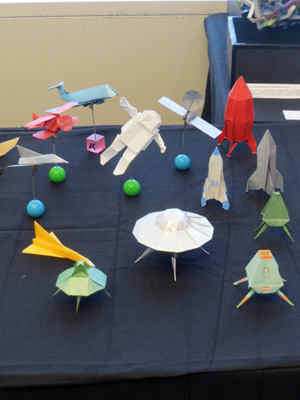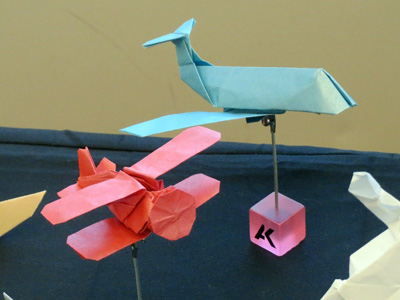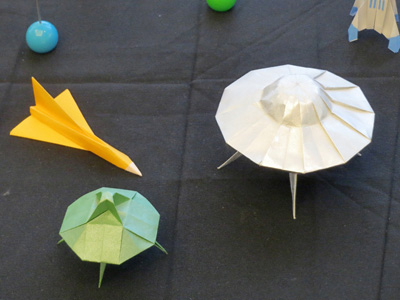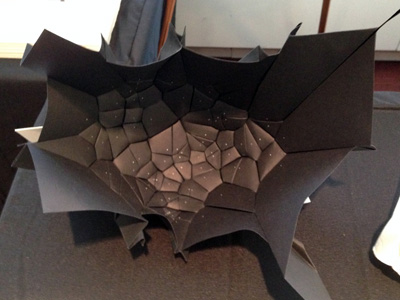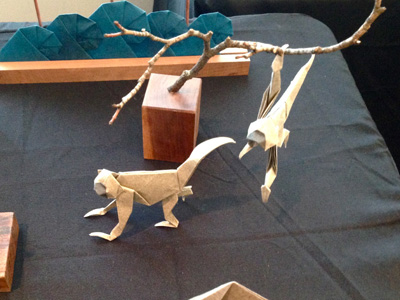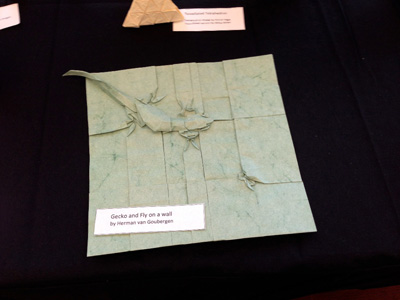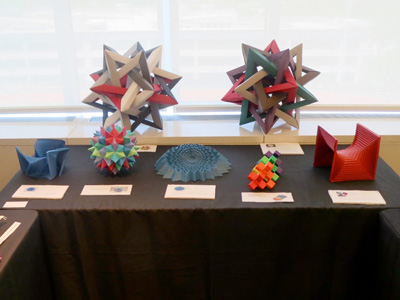Another milestone for my upcoming book Origami from Space. Once all the graphics for the paper had been approved by all parties my publisher asked me to submit the photos. So I printed out all the graphics and folded all the models, taking extra care. Along side I have most of the models folded at exhibit quality with non-printed paper, mostly the kind Origami Shop calls “tissue foil” or “shiny”.
I have basically a homemade mini-studio setup for photography, which is how I did the cover for my last book. I set it up and got to work.
The major limitation was the lights. I used to have a pair of really bright white halogens, originally meant for industrial use like in a shop, and I’d put frosted lexan in front of the lamp to serve as a diffuser. Some time ago the switch on of the units burned out and I was down to one.
So I filled it in with some other lights I had around, but when the publisher got the pictures he said there were some harsh shadows and bright hot spots which they didn’t like. I kinda do like this look, as it brings out the texture and shape of the models, especially for the non-printed paper. But I think they’re after breakfast-cereal-television-commercial bright.
The other limitation of my setup is the depth of field was low in some shots, so things we’re as in-focus as the could be across the z-plane. Again something I thought was cool but they didn’t go for. I figured it was time to get a new lighting kit.
It’s amazing what you can find on the internet these days. I went with pretty much the cheapest one I could find that seemed decent. It contained three tripods and light setups with diffusers and a stand to shoot against for a little over $100. Back in the days of film it would have been thousands of dollars for something like that.
The tripods were aluminum and plastic, very lightweight but fine for indoor use. And the diffusers were just cloth and a bit of wire, like an umbrella. The big innovation was the lighting units themselves, which took for compact fluorescent bulbs each, equivalent to 150 watts from a regular bulb, for a total of 1800, but with a pure white light and giving off no heat. Amazing. The huge amount of light let me dial down the aperture and open up the depth of field on my camera. Light in photography is equivalent to silence in audio recording. The level determines the absolute noise floor and dynamic range you can get.
It took a while to put the whole thing together, but the shoot when smoothly enough and the publisher seemed satisfied. I imagine I’ll have to do some pick-up shots pretty soon. Then I had to find a place to store the kit so I could set up my new synthesizer. So we had to get rid of some old junk, which led to cleaning out the wizard closet and the garage. Projects beget more projects.
Now I’m in the process of putting together a gallery of some of the pics, but first I have to upgrade my photo processing software.
